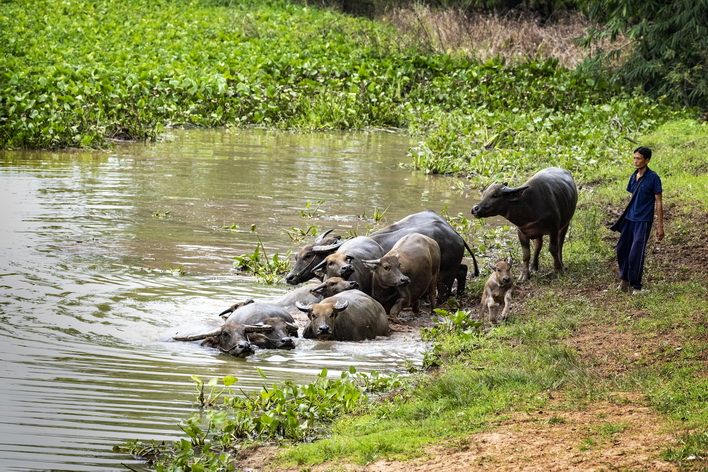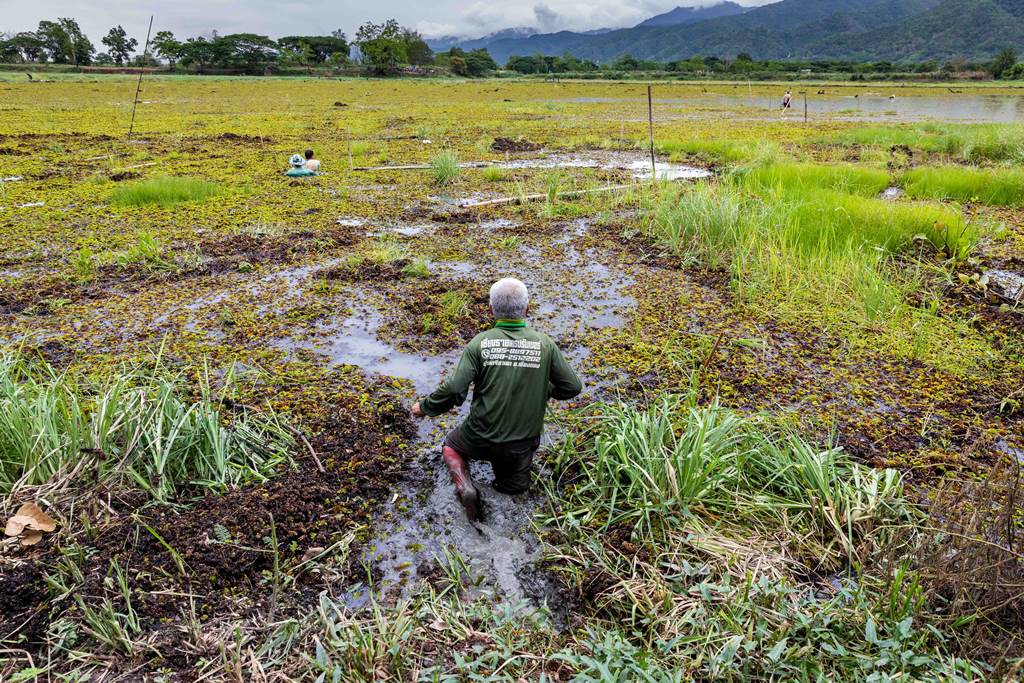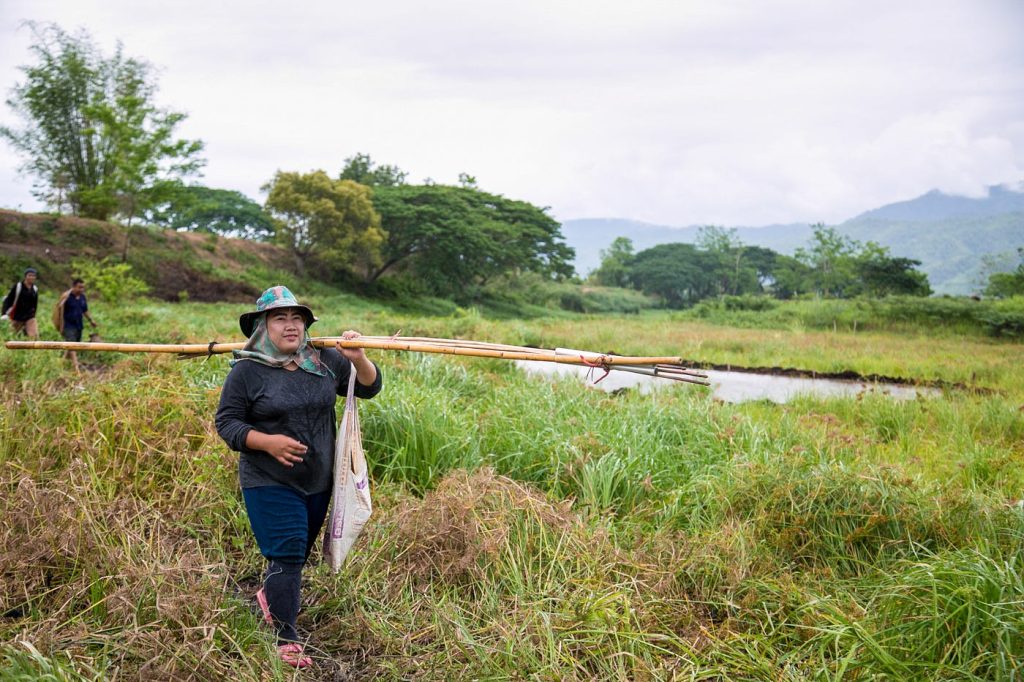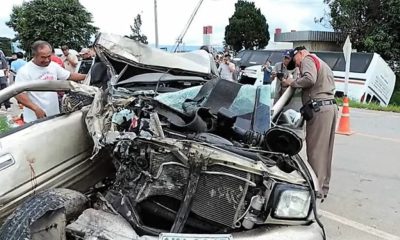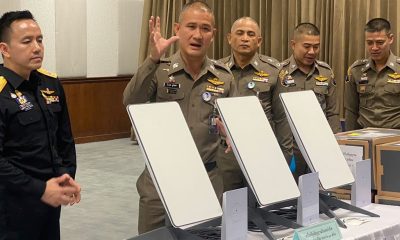Chiang Rai News
Critical Wetlands in Chiang Rai Come Under Treat From Development
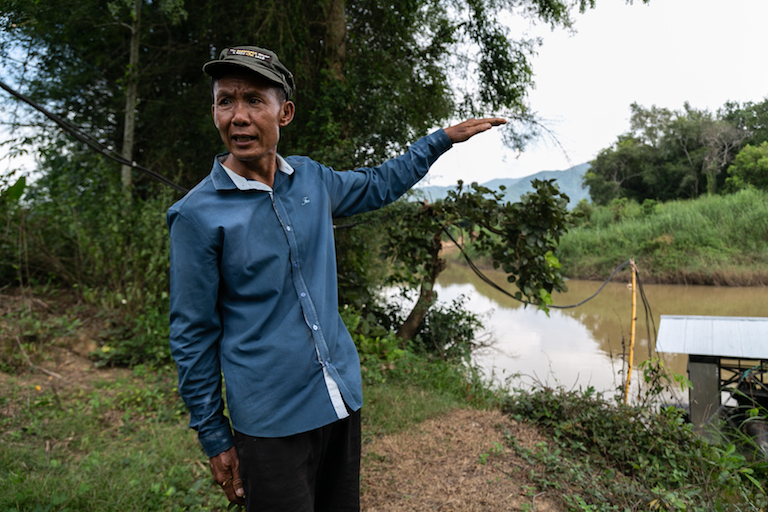
According to a sustainable growth and fair use of natural resource expert, development initiatives in Chiang Rai Province’s Mekong Basin may endanger lives and livelihoods along the river. The vast 8-million-square-metre wetland is a habitat for buffaloes and the breeding ground of countless freshwater species is now in danger.
The Nong Luang wetland resources in Chiang Rai Province (Thailand), has grown in recent years due to the expansion of farmlands and other important sources of wetland conflict, such as public land invasion.
Covering two districts in Chiang Rai province, the wetland is considered one of the most abundant ecological sites in the country and a place where many Siberian cranes from eastern Russia migrate to rest during winter.
Last year, the long-conserved swamp valley also became home to a mega-sized “Wiang Nong Lom Large Natural Water Resources Development Project”.
Intended to prevent droughts and flooding while creating jobs and boosting local tourism, the scheme consists of 65 projects including 22 water management works.
The Irrigation Department has dug up the land to increase water storage capacity to help contain floodwater in and around 14,531 households. Still, locals have been vocal in their disapproval of many of the measures being taken under the banner of Wiang Nong Lom.
“Thousands of buffaloes used to roam the swamp freely to eat grass, but the grass was uprooted to pave the way for us to catch crayfish,” a local farmer in his 60s said. He explained that people living around the wetlands agreed not to use pesticides for fear that it would harm the buffaloes.
Without the chemicals, water species also multiplied in number and thus became a local source of income for many.
“It was a great ecosystem. Now everything’s gone.
“I do not want to be someone else’s employee,” the farmer added, explaining that he and many others couldn’t care less about the government’s intention to create jobs at the project’s many sites.
Under the project, fences have been installed in some parts of the wetland to prevent invasion. As a result, there’s no longer sufficient grass for the buffaloes, and farmers are having to bear the cost of buying extra feed for the animals themselves.
Some fear the freshwater fisheries, long significant to locals, will continue to see catches plummet due to the threat that the construction work poses to water habitats.
“I don’t know if there will be any fish for us to catch next year,” another local complained.
He said it was difficult to negotiate with the authorities because the construction had started as soon as the budget was allocated, with little time for local input.
In other parts of Chiang Rai, other dams and similar development projects built along the Mekong River have changed local lives drastically.
One ethnic Tai Lue woman told the Bangkok Post that there used to be a large sandbank where local could gather and plant crops.
They can no longer do so as the river bank is gone, as are many freshwater fish, especially the Mekong giant catfish, which had long been a local staple.
“The dam obstructs them from laying eggs. Some eggs cannot make it through dam filtration,” a local Tai Lue woman said. She added that the river was a habitat for kai, a freshwater algae which could be harvested in winter.
The changes in water levels made the algae, another source of local income, disappear, she said. After the river changed, she said most Tai Lue people could no longer rely on the river fisheries for an income. Most of the Tai Lue people instead had to turn to farm labour to make a living, she said.
“It is long believed that to develop a country, it is necessary to invest on building infrastructure. “But it has been proved over time that sciences and technologies cannot prosper without considering the political, social and cultural contexts,” Chayan Vaddhanaphuti, director of Regional Centre for Social Science and Sustainable Development, Chiang Mai University, said.
He said engineering and science might be the answer for development but there are many stakeholders, especially those who have little power. “We need to consider that they also have their voice,” he said.
The Mekong region has long been ethnically diverse and is also afflicted by power plays between so-called upstream states and downstream states.
Upstream states have the right to control water flow while those downstream of the river have limited power.
“Even if many locals no longer rely on the river for their agriculture, they still have concerns about how the development would affect their livelihoods such as potential floods, or how such projects will affect the border,” he said.
Locals must get a say regarding fair use of river, he said. An open dialogue allowing all stakeholders to express their concerns and viewpoints should always be considered.
“We cannot look at the river solely from an energy perspective. We need to consider rights to the river, to ensure future generations survive with these natural resources and get the benefit from it,” he said.

